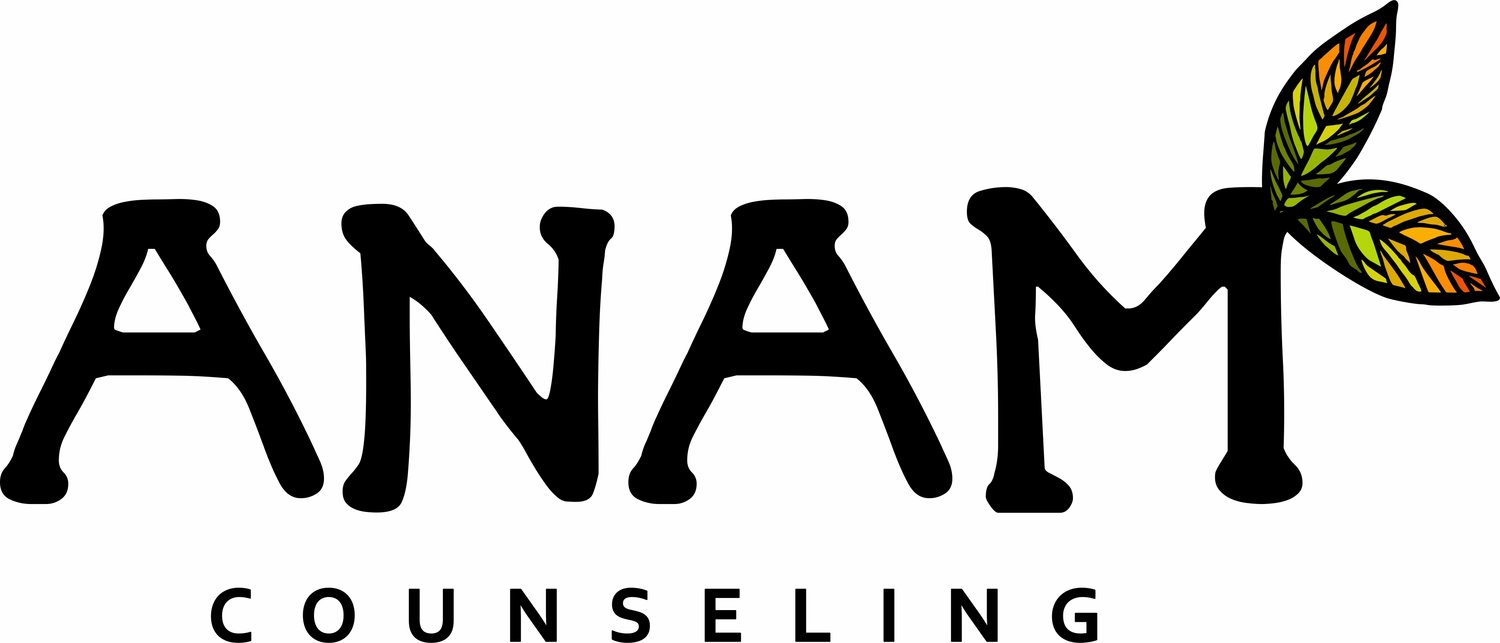Early Fall Update
Name Change, New Office Location Scheduling Updates, Telehealth, and More
Jess Helle-Morrissey, MA, MSW, LGSW, PMH-C Fall 2019
Warm early autumn greetings to you! First, you may have noticed that I’ve slowly rolled out a name-change and new logo over the last year. What was once Metta Therapy is now officially Anam Counseling. I changed the name of my practice in an effort to avoid cultural appropriation. Anam, meaning “soul”, comes from the Gaelic language, and my cultural background is Irish (among a couple other things!) so the name is more authentic to me. Additionally, the work I do in my practice is very soul-centered so Anam felt right on all levels. Going forward, please make sure to use the email address jess@anamcounseling.com to communicate since I’m not checking the old address as much. My phone/text number remains the same.
In other news, this spring I was approved to sit for the new international certification in Perinatal Mental Health. (Mental health in the period of time covering conception to baby’s first birthday.) I am happy to say that after lots of studying, I passed the exam and am proud to have the letters PMH-C behind my name. Does this change anything in my practice? Nope. But, it reflects my commitment to the importance of recognizing perinatal mental health as a specific and important specialization that should be treated by folks who are experts and have sought additional training in the field.
New Minneapolis Monday Office Location
The biggest news is that after six wonderful years renting space from Blooma, I’ll be moving to a new office space with Well + Whole Collective effective Monday, September 30, 2019. This beautiful new space is located just blocks from Blooma and is in a collective space shared by 5 other therapists as well as a reiki practitioner. I’m eternally grateful for my time renting my little room from Blooma. And, I can’t wait for everyone to see the new space! There is ample on-street parking as well as a small parking lot in the back of the building. My Thursday office in St. Paul near the intersection of Snelling and Selby remains the same. Please note this means the only scheduling option going forward is my online self-scheduler.
4801 1/2 Nicollet Ave
Minneapolis, MN 55419
Scheduling
And speaking of scheduling… Over the last several months, my practice has grown so that I’m filling most of my available sessions each week and sometimes several weeks in advance. So what does that mean for new and existing clients?
If you’re wishing to be seen on a regular basis, I strongly encourage you to go to my online self-scheduler and schedule multiple sessions in advance. This will ensure that there is room when you want to be seen. Generally if you schedule about three or four at a time, that should account for the increased busy-ness.
Remember, if you schedule ahead and something ends up not working, you can always go into the scheduler and cancel the appointment. Just remember that cancellations that are within 24 hours before the appointment are still charged and 48 hour notice is preferred so I can try to get someone else in the open spot.
If you’re someone who has a regular recurring weekly appointment, then no need to do anything different! If you don’t already do this, consider scheduling a consistent recurring weekly or every-other-weekly appointment. It’s a great idea both logistically and therapeutically.
In general, I tend to be slightly less full in my St. Paul office location. So if you are looking for an appointment and can’t find a time on Monday and don’t mind crossing the river, check out my Thursday availability for more options. If you haven’t been to the St. Paul spot, it’s a lovely, cozy, light-filled room in an old home that is now used for independent therapy offices. It’s on Selby just west of Snelling Ave., conveniently located just south of the Snelling exit off I94. If you regularly come to Minneapolis, I promise you my St. Paul office isn’t much farther!
New Telehealth Option
With our record cold and snowy winter, many folks already had the chance to try out my new Telehealth software in February. For those who have not, it’s a new HIPAA-compliant app that lets us have a virtual session from wherever you are. I’m only using this option for existing clients and ideally only when weather or illness keep you (or me!) from coming into the office in person. I still like the old-fashioned, face-to-face therapy best. But it’s a good option in a pinch when life gets in the way of therapy scheduling.
Brainspotting - A New Treatment for Trauma
This spring I completed training in Level 1 of Brainspotting. This is an evidence-based eye-movement modality that helps the brain move quickly through traumatic or difficult memories. It can be helpful for single-incident trauma such as traumatic birth as well as for longer-term developmental trauma. Additionally, folks use Brainspotting for general issues that feel “stuck” and don’t necessarily rise to the level of trauma. Let’s chat in session if you’re interested in trying it out.
Small Price Increase on october 1, 2019
Beginning October 1, the ongoing per-session rates will increase by $8 per session from $110 per session to $118 per session. Intakes and joint couples’ sessions will remain $135 since both of those use the full 60 minutes instead of the regular 45-minute session. It has been over two years since my last rate increase, and in that time rents at both my locations have increased, I’ve purchased new Telehealth software, I’ve gained new certifications, and done several additional trainings. And, 2020 will mark my 15-year anniversary as a clinician, which hardly seems possible!
As a reminder, I am always happy to provide you with a receipt and a diagnostic code for you to submit to your insurance company for potential out-of-network (OON) reimbursement. As a reminder, OON is not guaranteed and is plan-specific based on your individual insurance plan and carrier. Sessions are still paid for up front and your insurance company would give you any potential OON reimbursement directly after you’ve submitted the paperwork. Sessions can also be paid for with an HSA/FSA card.
EXPLORE THE NEW WEBSITE
Anam Counseling
Practical Counseling with Heart and Soul
Jess Helle-Morrissey, MA, MSW, LGSW, PMH-C
www.anamcounseling.com



